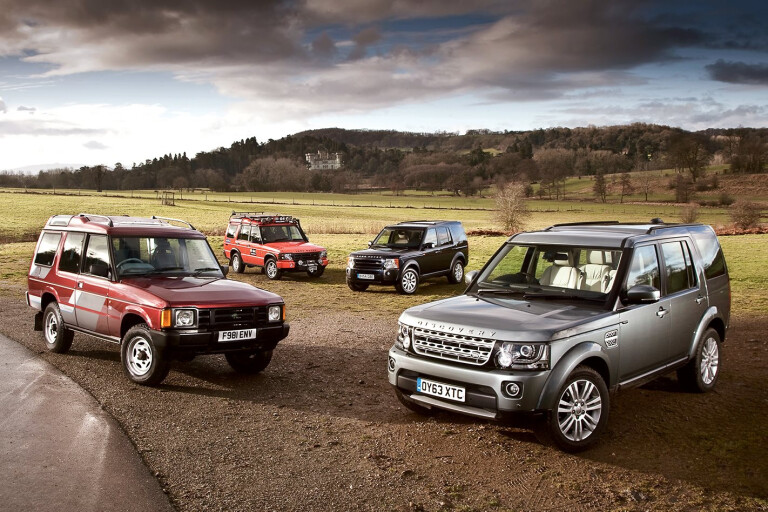
For a snapshot of how the British motor industry has grown, look no further than the range offered by Land Rover in 1989, just before the Discovery was launched.
Back then, dealers had just two products to sell: the farmer-friendly Land Rover Defender and the swanky Range Rover, the pair positioned so far apart as to be almost comical.
Things couldn’t stay like that, and they didn’t. The gap has been filled over the years and, truth be told, the whole move began with the launch of the Discovery, which has since sold more than a million copies.
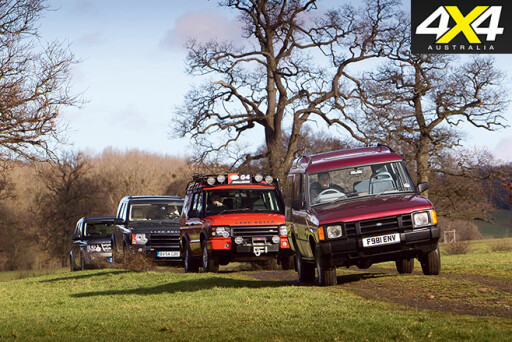 In 1989 an air of expectation surrounded Land Rover as spy pictures gave fuzzy details of a mysterious new ‘leisure’ model codenamed Project Jay. Launching a third model seemed a bold step for a company still recovering from the upheaval of nationalisation (1975) and privatisation (1988), but in world terms Land Rover was years behind the game.
In 1989 an air of expectation surrounded Land Rover as spy pictures gave fuzzy details of a mysterious new ‘leisure’ model codenamed Project Jay. Launching a third model seemed a bold step for a company still recovering from the upheaval of nationalisation (1975) and privatisation (1988), but in world terms Land Rover was years behind the game.
The Japanese, who understood world markets better than anyone, had been expanding sales of their Pajeros, Patrols, LandCruisers and Rockys. Partly because of these, and helped by a growing US vogue for lifestyle 4x4s such as the Ford Bronco and Chevy Blazer, a demand for softer off-roaders was growing in Europe. Between 1983 and 1988, sales of 4x4s expanded from 80,000 to 200,000. The figures look paltry now, but they disguised a four-fold increase in demand for leisure off-roaders, and by the mid-1980s even the preoccupied management of Land Rover had spotted the trend.
That word ‘even’ isn’t intended to denigrate those in charge at the time. It’s just that within the nationalised environment, things took years longer than they should have. It had taken 10 years for the original Range Rover to be made as a four-door and 16 for it to be launched in the US.
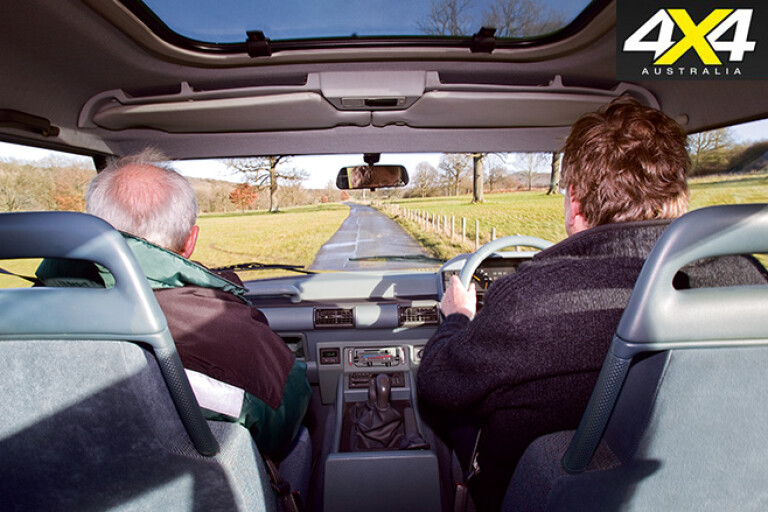
There were other distractions, too. Even as the Discovery project was starting in 1986, hundreds of Land Rover stalwarts were protesting a plan espoused by Mrs Thatcher to sell Land Rover to GM (they occupied Hyde Park as a protest and were so effective that Number 10 did a deal with British Aerospace instead).
What we didn’t know then was the extent to which the Discovery would change life at Land Rover. Against the glacial timetables of previous projects, it went with amazing speed. Led by Mike Donovan, the company decided a fast-to-market leisure model would need to use existing hardware and know-how, so it settled on Range Rover underpinnings.
From then on, the Discovery was created in record time, using procedures previously unseen at Solihull but still in use today. “The Discovery was our first entry into a project team environment,” John Bragg, head of engineering at the time, says. “It was far more efficient than anything we’d done before. One of our bosses referred to us as the paperless society, because team members carried much detail in their heads. If someone had left at the time, we’d have been in all sorts of trouble.”
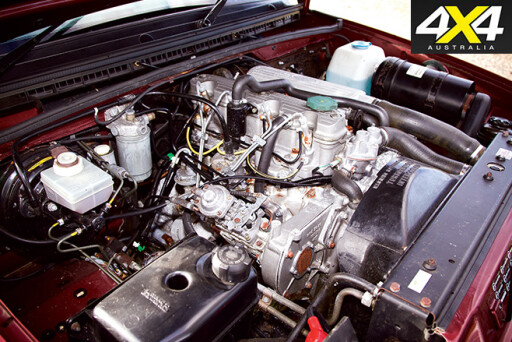 Only now, looking back over the Discovery 1’s nine-year life from a decent distance, is its essential ‘rightness’ visible. This is what we were doing one sunny morning at Eastnor Castle, near Ledbury (UK), the magnificent country estate on which the off-road abilities of every Land Rover since 1970 have been developed. Irrepressible heritage expert Roger Crathorne, a 50-year company man, had brought one of each of the four Discovery models and we were to be treated to a ramble through the model’s history.
Only now, looking back over the Discovery 1’s nine-year life from a decent distance, is its essential ‘rightness’ visible. This is what we were doing one sunny morning at Eastnor Castle, near Ledbury (UK), the magnificent country estate on which the off-road abilities of every Land Rover since 1970 have been developed. Irrepressible heritage expert Roger Crathorne, a 50-year company man, had brought one of each of the four Discovery models and we were to be treated to a ramble through the model’s history.
We started our exercise with a fine Discovery 1. Not just any example, either, but the first saleable unit: a highly prized 2.5 Tdi 200 diesel from the company’s heritage collection that has done only a handful of miles and is in better-than-new condition.
I remember plenty about this model’s launch, having been among the pressing crowds that watched its unveiling at the Birmingham Motor Show in 1989. The company had also revealed it in Frankfurt a few weeks earlier – in a bold attempt to underscore its challenge to international rivals – but this was very definitely the main event. We might have been dismayed that the vehicle they unveiled was a two-door (or three-door, if you counted the single side-opening rear door), given the 10-year gestation of the four-door Range Rover. But Land Rover had already revealed that a four-door Discovery was less than a year away.
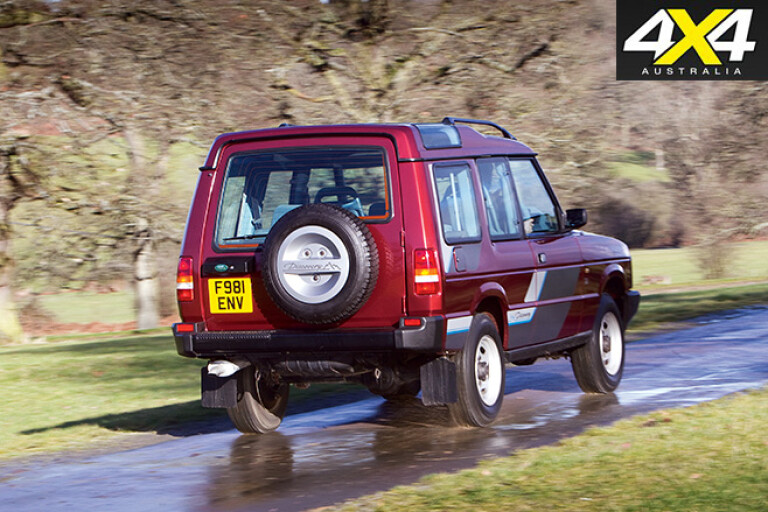
To inject some drama and shroud the pragmatic decision to use Range Rover running gear, bosses engaged product designer Jasper Conran to create a new interior, a move that drove the public’s imagination. Not all of Conran’s innovations made production (he visualised, for example, a sunglasses holder in the steering wheel boss), but features such as the then-adventurous grey-blue upholstery and a holdall that zipped into the car’s console made positive headlines.
The exterior designers also excelled. Although the dimensions, weight, chassis, coil suspension and steel inner body structure (beneath aluminium outer panels) were all close to the Range Rover, the Discovery had its own identity – a major achievement given the pair shared the same scuttle and windscreen. But the Discovery’s two-level roof, with revolutionary skylights, gave it a character that has driven its styling since.
On the outside, decals were the thing. Land Rover used them to simply modernise and make the difference between its new model and the more tasteful Range Rover, although they didn’t last long. The customers just didn’t like them.

Even now, it’s the drive that impresses. Our early model’s meaty 83kW turbodiesel had a rattle about its idle that always seemed reassuring and remains so today. Plug the short gear-lever into first and the memory of rifle-bolt shifts flood immediately back, along with the sure stroke of a long-throw clutch. The Discovery strolls away from rest and over Eastnor’s bumps with a low rate gait that is ridiculously pleasant as long as you don’t hurry, although these days, suspension designers would probably want to tame it with more powerful damping.
There are more major surprises. One is a fuel tank capacity of nearly 90 litres, which allows even this somewhat old-tech diesel to do 960km between fills, something that always underscored the expedition readiness the Discovery’s name implies. Another is the glassy, low-waisted character of the cabin and the exemplary space.
The two-door Discovery 1 has short front doors that makes access to its rear quite difficult by modern standards, but once passengers are installed they find the rear compartment’s room and comfort impressive – more impressive, in fact, than the Discovery 2, which arrived in 1998 and had its middle row squeezed forward to make space for a pair of forward-facing seats at the very back.
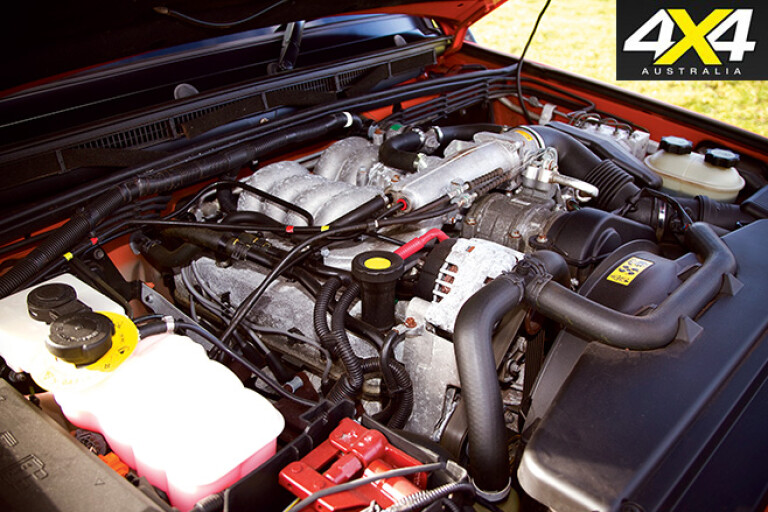
We move on to the Discovery 2, a specially loaded version configured for Land Rover’s former global torture test, the G4 Challenge. Roger Crathorne rides along, but he isn’t struck on the 2, what with its cramped rear and an extended rear overhang that hampers serious off-roading.
Still, this is a beguiling edition: a five-door V8 auto, nose-heavy in comparison with the four-cylinder 2.5 Tdi but superbly torquey and smooth, with a sedate burble curling up to your ears. With a four-speed automatic, it’s luxurious but sedate. And thirsty; this is the version that made the Discovery’s big tank a necessity.
Diesel and economy lovers could by now choose the 2.5-litre, 101kW five-cylinder Td5 diesel, whose 300Nm at under 2000rpm is its main event. This unusual engine is just as durable as the rest, says Crathorne, but depends more than earlier engines on electronics for correct functioning. This is inclined to deter those who use Discoveries to cross trackless wastes and expect to mend out-of-sorts engines with hammers and screwdrivers.
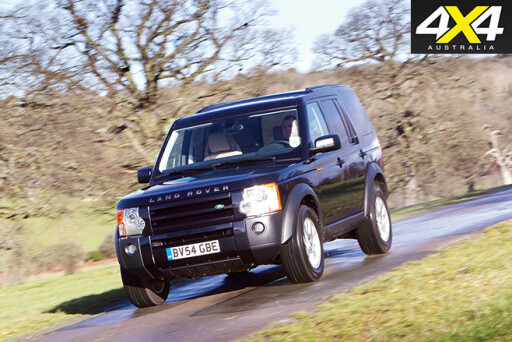 Forgive me if I don’t dwell on driving the Discovery 3 and Discovery 4. This is not to imply a lack of love or respect; the reverse is true. It’s just that these are modern vehicles about which we’ve written enormous tracts in recent years. Too many people have said too many times that Discoveries 3 and 4 are essential utility vehicles for any other conclusion to be contemplated.
Forgive me if I don’t dwell on driving the Discovery 3 and Discovery 4. This is not to imply a lack of love or respect; the reverse is true. It’s just that these are modern vehicles about which we’ve written enormous tracts in recent years. Too many people have said too many times that Discoveries 3 and 4 are essential utility vehicles for any other conclusion to be contemplated.
These two introduced V6 diesels of increasing brilliance and frugality – first a 2.7 and then a 3.0 – and lots of electronics to find traction where the naked eye would swear there was none. However, the styling is the thing for me. The Discovery 3’s lead designer was a bloke called Andy Wheel, and from the first day his work was revealed at the end of 2003, I’ve admired its gracious, neatly chiselled lines above any other SUV.
Which is why, to this day, assessing capability against cost, the Discovery 3 is my favourite of the four. Back in 2005 I ran a long-termer for 40,000km and had very serious designs on buying it. Our activities included a tough expedition in Iceland that it survived without acquiring so much as a nick in an alloy wheel.
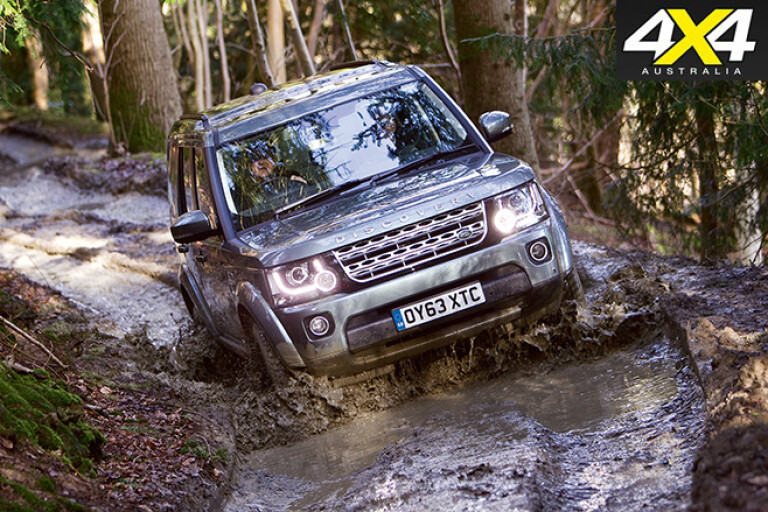
Naturally it had to be shipped back from Iceland, and I was looking forward to its arrival one morning – and to negotiate a buying price – when the phone rang and it was the man from Land Rover. “Your Discovery won’t be back, I’m afraid,” he said rather bluntly. “There was fog on the M1 last night. The transporter jack-knifed and your car fell off the top deck.”
The pain took me by surprise. A member of the family had gone without warning. The Missus, who loved that car, was upset for a week. Other Discoveries were offered, but it wasn’t the same.

COMMENTS